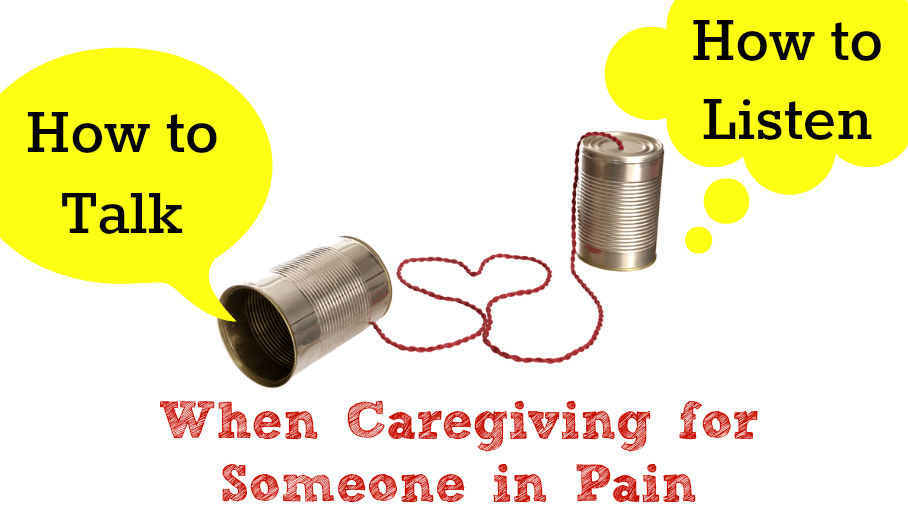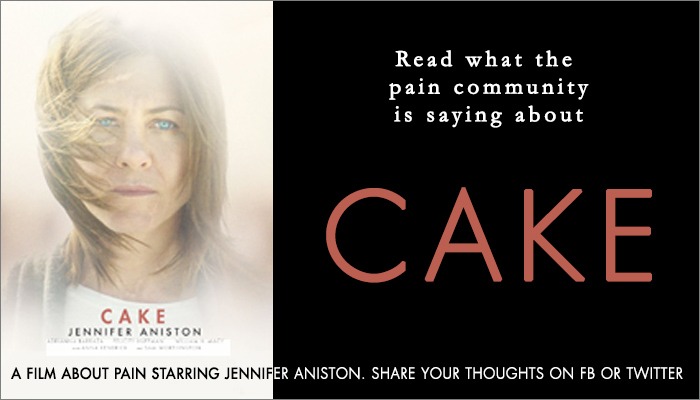Reducing Caregiver Stress by Improving Communication

If the person you care for is in pain, your caregiver stress can be high…especially when it comes to communication. Talking to someone in pain isn’t easy, and it’s hard to know when to not talk and simply listen.
Perhaps the person you care for needs medical help but is refusing to get it? Suppose their pain condition is impeding their ability to drive – yet they won’t give up the car keys? Or what if you as a caregiver have lost your patience, causing the person you care for to shut down communications?
Caregiving and communication is very much about knowing when to speak up and when to stay quiet and listen. Here are some steps you can take to do a better job at both and reduce your caregiver stress – and that of the person you care for.
How to talk
Keep in mind the level of pain that day and in general of the person you care for before deciding to converse. Things change for pain sufferers by the day and sometimes by the hour – so start off by knowing the best time to approach them. For a more productive communication, start with the following:
- Discover: Ask open-ended questions and actively listen to what your pain sufferer says in response. Avoid denying their feelings and provide support. Make sure you aren’t assuming things simply because you are around your pain sufferer most of the time.
- Provide options: Offering options can help your pain sufferer feel in control. For example, you can ask if they would like to go to their next doctor’s appointment in the morning or afternoon. The offer assumes that the appointment will occur, but the pain sufferer maintains an element of control.
- Repeat and reframe, don’t confront: Be prepared to repeat or reframe your conversation, remaining calm and patient. Also, always meet your pain sufferer where they are, not where you would like them to be. Arguing only creates more caregiver stress and can cause the pain sufferer to shut down.
- Get help: It can be a lot easier to take advice from an individual whom a pain sufferer considers an authority, such as a doctor. So sometimes, it may be best to leave the talking to someone who is seen as an expert.
Communication Tips
Try not to shout, and use your hands. Shouting actually makes it more difficult to enunciate, making it harder for your loved one to understand you. Using your hands during a conversation can help you convey your message.
Communicate face-to-face, rather than from across the room. It may be easy for a caregiver to “multi-task” while preparing meals or doing laundry, but make sure to have conversations when you are not in the midst of other activities. Having this undivided attention may make your pain sufferer more willing to both listen and talk.
Slow down and enunciate. Try not to rush through your sentences. You’ll be more easily heard by any listener, of any age or health condition. Communicate at an even pace, to allow both of you to think through the conversation and how to reply.
Use humor when appropriate. Humor can help ease the tension and often “break the ice” for starting conversations.
How to Listen
While listening is an underrated skill for most people, being a good listener is even more crucial for caregiving for someone in pain. To hone your skills, make sure to:
- Really listen: Listen to what your pain sufferer is saying, as well as what they are not saying. Try to determine what they are hearing you say. This skill can help you create a more appropriate response.
- Be attentive to non-verbal communication: Non-verbal techniques are helpful for those with impaired speech or hearing. Use pictures or objects to help communicate. Nod your head “yes” or shake your head “no” to answer to a simple question. You can also use the tone of your voice or your facial expressions to emphasize a point.
- Pay attention: Do the words and the behavior from your pain sufferer match when they are speaking? Remember that fear may make someone hesitate to say what is really going on, so be encouraging.
- Listen with your body language: While allowing your pain sufferer to be heard, look them in the eye, lean into them or put your hand on their shoulder. These non-verbal queues show empathy, support and concern. However, keep in mind that not everyone prefers this attentiveness.
Caregiver stress is a daily struggle – and balancing empathy for your pain sufferer with patience in meeting their needs is always a challenge. But by incorporating some of these approaches into your conversations, caregiving and communication doesn’t have to be so difficult.
(Contributing source and overall good website for resources: www.liftcaregiving.com)
What have you learned about talking to someone in pain? Please share your comments on caregiving and communication below.
PainPathways Magazine
PainPathways is the first, only and ultimate pain magazine. First published in spring 2008, PainPathways is the culmination of the vision of Richard L. Rauck, MD, to provide a shared resource for people living with and caring for others in pain. This quarterly resource not only provides in-depth information on current treatments, therapies and research studies but also connects people who live with pain, both personally and professionally.
View All By PainPathways






